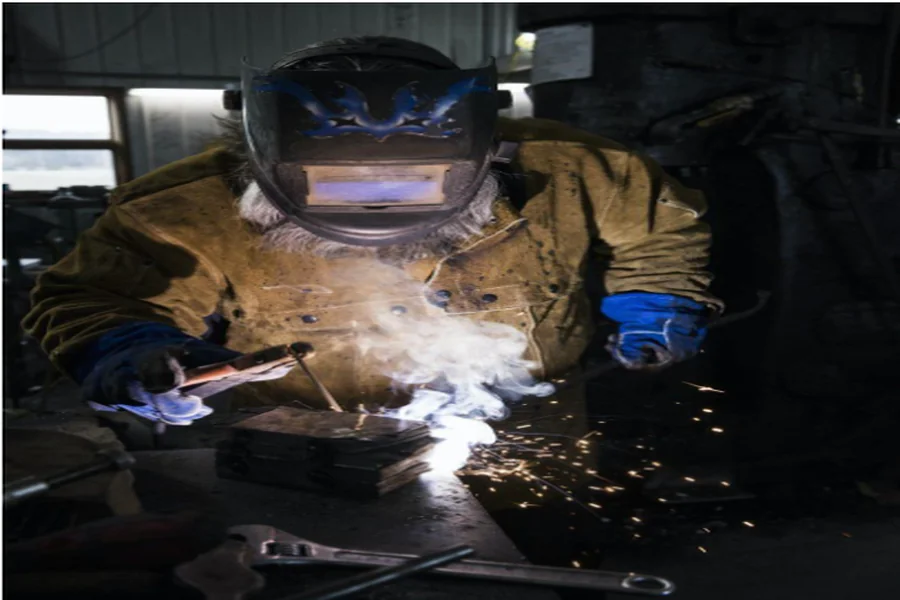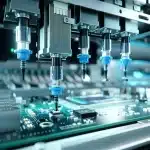Manufacturing is in the middle of a quiet revolution. Processes that once relied on heat, bulk, and manual labor are now being reshaped by leaner, smarter, and more precise technologies. At the heart of this transformation is the laser welding machine — a tool that’s changing not only how things are made, but also how fast, accurate, and cost-effective production can be.
Unlike traditional welding, which often comes with trade-offs between speed and quality, laser welding harnesses concentrated light energy to create incredibly precise welds with minimal distortion. This leap in efficiency has made it a go-to solution in industries as diverse as automotive, aerospace, medical device manufacturing, and consumer electronics. For businesses looking to sharpen their competitive edge, understanding the potential of laser welding is no longer optional — it’s essential.
What Makes Laser Welding Different?
Traditional welding methods — MIG, TIG, or stick — rely on an electric arc or flame to melt and fuse materials. While effective, these methods can cause heat-related damage, require multiple passes, and often leave behind imperfections that need additional finishing.
A fiber laser welder, on the other hand, uses a high-intensity laser beam to focus heat precisely where it’s needed. That focus creates:
- Minimal distortion — less heat means fewer structural changes to the base material.
- Faster welds — a single pass can often do what would take multiple passes in arc welding.
- Cleaner joints — reduced splatter and smoother finishes cut down on post-processing work.
The result is a process that’s not only faster, but also consistently reliable — a huge benefit when even the smallest defect could compromise safety or performance.
Key Advantages of Laser Welding Machines
Businesses making the switch often point to four standout benefits:
1. Precision Without Compromise
Laser welding can target areas as fine as a human hair, making it ideal for intricate parts and thin materials. In sectors like medical devices or microelectronics, that level of accuracy is not just beneficial — it’s mandatory.
2. Speed That Scales
When production schedules tighten, traditional welding can become a bottleneck. Laser welding removes much of that drag by delivering clean, consistent welds in a fraction of the time. In high-volume automotive plants, for instance, cutting seconds off each weld adds up to major productivity gains.
3. Lower Long-Term Costs
While the upfront investment in a laser welding machine can feel steep, the efficiency savings often pay for themselves. Less rework, reduced scrap, and lower labor costs all contribute to long-term ROI.
4. Flexibility Across Materials
From steel and aluminum to copper and exotic alloys, laser welding adapts with ease. That versatility is critical as manufacturers experiment with new lightweight or mixed-material designs.
Comparison: Laser Welding vs. Traditional Welding
| Feature | Traditional Welding | Laser Welding Machine |
| Heat Input | High (risk of distortion) | Low (minimal distortion) |
| Speed | Moderate | Very fast |
| Precision | Limited | Extremely high |
| Material Compatibility | Mostly metals | Wide range, including alloys |
| Post-Processing | Frequently required | Minimal |
| Automation Integration | Limited | Highly compatible |
Real-World Applications
The reach of laser welding machines extends across nearly every manufacturing sector:
- Automotive: From battery packs in electric vehicles to intricate engine components, laser welding ensures both strength and accuracy.
- Medical devices: Precision is non-negotiable when welding surgical tools or implants, where even a tiny flaw could risk patient safety.
- Aerospace: Lightweight alloys and strict safety standards make laser welding indispensable for parts like turbine blades and fuel systems.
- Electronics: Smartphones, sensors, and microchips demand tiny welds that traditional methods simply can’t deliver.
Limitations to Consider
No technology is without drawbacks. Manufacturers should be aware that:
- Initial investment is high: Costs can be a hurdle for small shops, though prices are gradually decreasing.
- Operator training is essential: Precision equipment requires skilled hands, particularly during setup.
- Reflective materials pose challenges: Metals like copper can reflect laser light, demanding specialized adjustments.
Even with these challenges, ongoing improvements in fiber laser technology are steadily lowering barriers to adoption.
Future Outlook: Where Laser Welding is Headed
The next wave of innovation is already underway. Expect to see:
- Greater automation: Pairing laser welding with robotics and cobots to reduce human error and boost throughput.
- AI-driven monitoring: Systems that adjust parameters in real time for perfect weld quality.
- Compact, air-cooled designs: Tools like Denaliweld’s handheld units are making high-quality laser welding more accessible on the shop floor.
As these developments mature, the laser welding machine will become less of a specialist’s tool and more of a standard fixture across factories worldwide.
Why It Matters for Manufacturers Today
Delaying adoption can mean falling behind. In competitive sectors, where product lifecycles shorten and tolerances tighten, speed and accuracy are critical. By embracing laser welding now, manufacturers not only gain immediate efficiency but also set themselves up for smoother integration with tomorrow’s fully automated systems. Industry innovators like Denaliweld are already showing how early adoption of advanced welding solutions can give companies a decisive edge.
Conclusion
The laser welding machine isn’t just another piece of equipment — it’s a symbol of where manufacturing is headed: faster, smarter, and more precise. For industries that thrive on accuracy and efficiency, it’s quickly shifting from a competitive advantage to a baseline expectation.
Whether you’re in automotive, aerospace, electronics, or medical devices, the question is no longer if laser welding will matter to your business — it’s when. And for forward-looking manufacturers, the answer is clear: the time to explore and invest is now.






